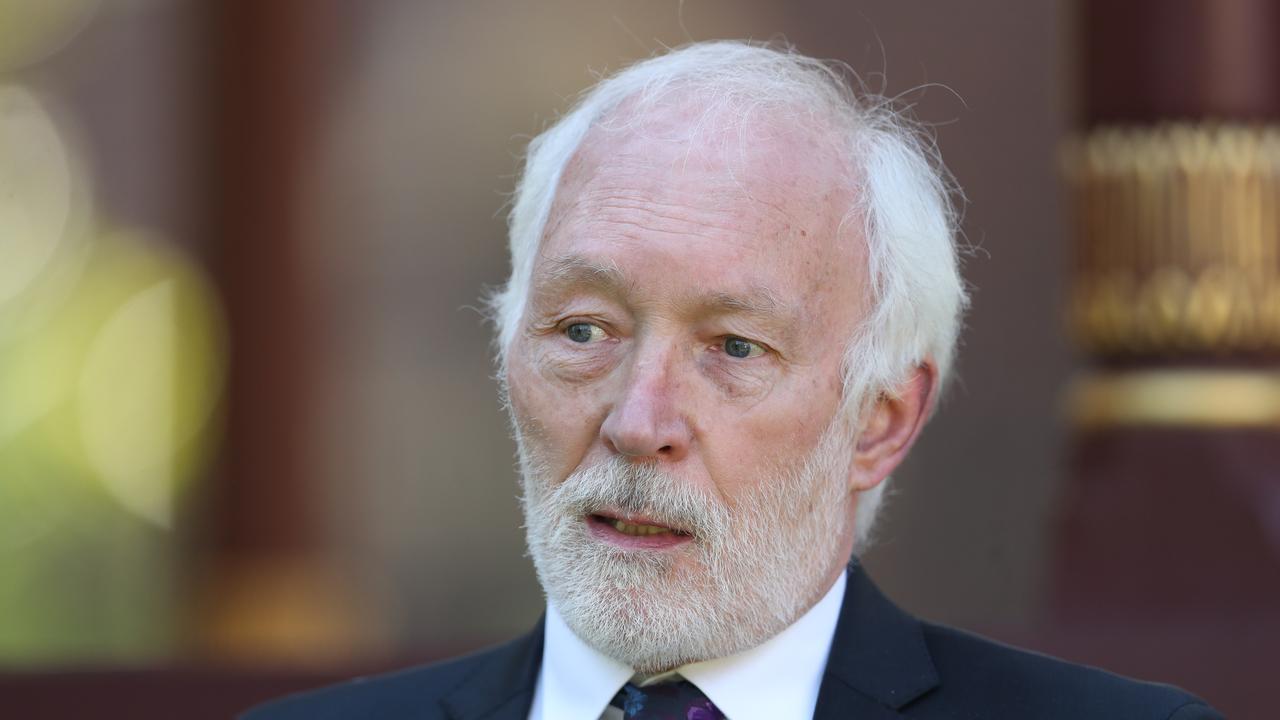Actuary finds $6bn hole in annual NDIS costings
THE National Disability Insurance Scheme has a $6 billion hole in its design.

THE nation’s flagship disability insurance scheme has an unfunded, annual $6 billion hole in its design, because the former federal Labor government did not fully model the cost of people growing old within it.
The scheme, spruiked as a $22bn program at its peak, will instead cost $28bn due to its beneficiaries ageing past 65 — and the gap will need to be made up by raiding other parts of the budget.
The addition of older people in the scheme was not modelled by the Productivity Commission, because it assumed their costs would be covered instead by the aged-care system, also funded by the commonwealth.
The Gillard government later altered the design of the scheme so that beneficiaries were not forced out of the NDIS when they turned 65. However, this change was never modelled and the NDIS agency was left to determine the costs itself.
Its actuary, Sarah Johnson, revealed the scale of the problem to The Weekend Australian.
“There’s been a bit of a shift in the policy and now we’re having people age in the scheme, which means the NDIS keeps funding their reasonable and necessary support as the person ages and that will increase the cost of the NDIS as we get more people in our scheme,” Ms Johnson said.
“So right now we do have some 65-year-olds. In 10 years’ time we’ll have some 75-year-olds. This is the first time we really sat down and modelled in a lot of detail the expectations of people remaining in the scheme, turning 65 and how much that might cost.”
Ms Johnson said the cost of ageing would be about $1.1bn in 2019-20 when the scheme reaches maturity and would climb to $5.94bn (in 2020 dollars) in 2044. The annual cost would continue to climb past that figure but it had not yet been modelled. The modelling shows ageing alone will increase the cost of the NDIS from 0.9 per cent of GDP to 1.3 per cent. The blowout, measured in 2020 dollars, does not include inflation between that period.
The Coalition government, which has been left to deal with the future funding shock, says the money has been set aside, although it declined to identify from where in the budget it would be found. Assistant Social Services Minister Mitch Fifield said the former government “comprehensively modelled” the legislation changes before it was passed, although this work was never released. The actuary, he said, was “verifying estimates of the level of funding needed by the NDIS”.
He said $22bn was “the Australian government’s figure for the cost of the NDIS in 2019-20”.
“This figure remains the best estimate,” Senator Fifield said. “But it’s worth noting $22bn is not a static figure. The Australian government estimates that it will take some 30 years for the scheme to reach full maturity in terms of participant demographics. The funding envelope of all government programs varies over time due to inflation and changing demographics. The ageing population means that the cost of both the aged care system and the NDIS to the commonwealth budget will increase over coming decades.”
A spokesman for the Department of Social Services said: “The agency has been provided with detailed modelling of estimated participant numbers for both over and under 65-year-olds. The modelling included estimates of the cost of the age groups, and the commonwealth funding for over 65s.”
When The Weekend Australian asked to see the modelling, the department declined to release it. When pressed on whether the modelling was done far into the future, when ageing costs would really begin to bite, the spokesman said the analysis had only been conducted over the next decade, consistent with projections made by former treasurer Wayne Swan in his last budget.
The Coalition says the commonwealth will have to pay for the support costs of the ageing regardless of which program administers the funds, although the money supports fewer people — but more generously — in the NDIS.
The Australian understands there are concerns about the creation of a two-tiered system, as NDIS support packages, which can run to hundreds of thousands of dollars per year, are neither means tested nor capped while the limited resources in the aged care sector are. A 64-year-old who becomes blind can access the NDIS for the rest of their lives for any disability support. Somebody who acquires a disability at the age of 65 will miss out on the bespoke NDIS solution and will instead be forced into the lesser aged care sector.
Labor’s former disability reform minister Jenny Macklin said the Medicare levy rise — which funds less than half of the NDIS at $22bn — and savings from means testing the private health insurance rebate meant the scheme was “fully funded into the future”.
“All aspects of the rollout were the subject of detailed policy work, economic modelling and discussion,” Ms Macklin said. “The 10-year modelling undertaken by the former Labor government on the NDIS was more extensive and long-ranging than modelling for any other policy or program by any other government.”
Updated figures on the trials released yesterday show 8880 people had approved NDIS plans and $395.3 million had been committed.



To join the conversation, please log in. Don't have an account? Register
Join the conversation, you are commenting as Logout